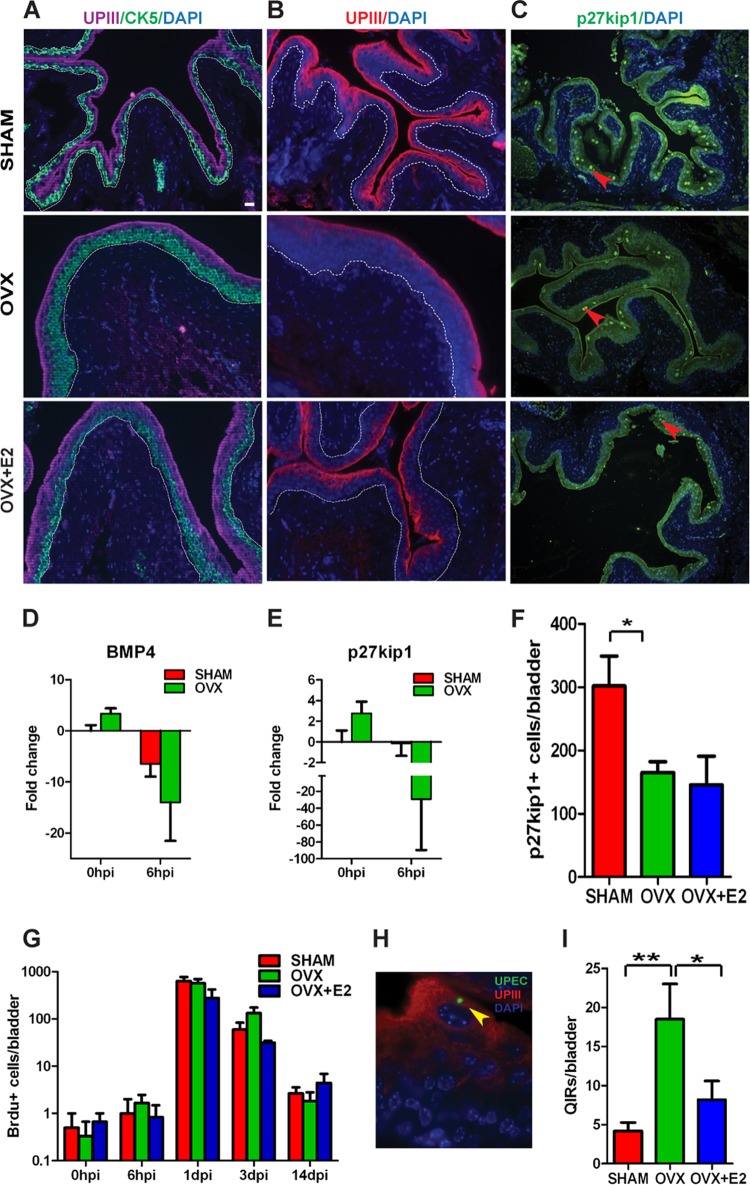Fig 4.
Estrogen deficiency leads to aberrant urothelial regeneration and increased bacterial reservoir formation. (A) CK5 and UPIII staining of bladders at 14 dpi depicting thickened CK+ (green) cell layer in the OVX urothelium. (B) IF analysis depicts reduced UPIII+ (red) staining in OVX bladders at 14 dpi. Dotted lines demarcate epithelium from bladder stroma. Bar = 20 μm. (C) p27kip1 staining of bladders at 14 dpi indicates fewer p27kip1+ cells in OVX urothelia. Bar = 40 μm. (D and E) qRT-PCR analysis reveals Bmp4 (D) and p27kip1 (E) gene expression is downregulated upon UPEC infection at 6 hpi in OVX mice. (F) Quantification of p27kip1+ nuclei reveals reduced numbers in OVX bladders at 14 dpi. Bars represent means ± SEM. *, P < 0.05 (by unpaired two-tailed t test). (G) BrdU counts at the indicated times after infection (n = 3 to 6 mice/time point/condition). Bars represent means ± SEM. (H) Representative image depicting a quiescent intracellular reservoir (QIR). Bar = 10 μm. (I) Quantification of QIRs in bladders at 14 dpi reveals a highly significant increased number in OVX mice, reversible upon E2 supplementation (n = 6 sections/bladder, 10 to 15 mice/group; n = 3 experiments). *, P < 0.05; **, P < 0.01 (by one-way ANOVA followed by Tukey's multiple-comparison posttest).

